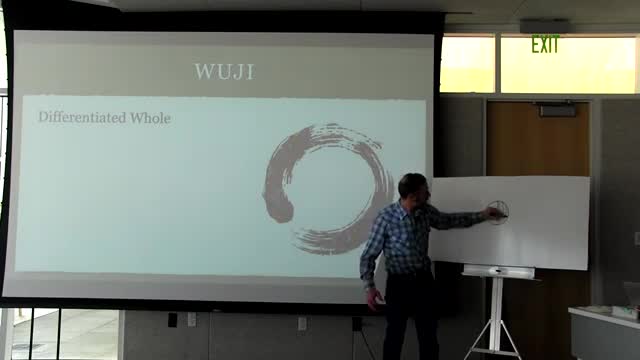Speaker explores yin and yang duality in Chinese philosophy and its modern implications
May 06, 2025 | Missoula, Missoula County, Montana
This article was created by AI summarizing key points discussed. AI makes mistakes, so for full details and context, please refer to the video of the full meeting. Please report any errors so we can fix them. Report an error »

The City of Missoula, Montana, held a meeting on May 6, 2025, to discuss the principles of Chinese medicine, focusing particularly on the concept of yin and yang. The session aimed to introduce attendees to the foundational elements of this ancient practice and its relevance to health and wellness.
The meeting began with an explanation of the duality inherent in the concept of yin and yang, which represents opposing forces in the universe. The speaker emphasized that these forces are not inherently good or bad but are necessary for balance. Yin is associated with qualities such as darkness, stillness, and contraction, while yang embodies light, activity, and expansion. This duality is illustrated through various natural phenomena, such as day and night, and is rooted in the ancient Chinese text, the I Ching.
A significant point of discussion was the historical context of yin and yang, including its influence on Western thought. The speaker noted that a French Jesuit, Wasim Bouvet, introduced the I Ching to Europe in the 17th century, which later inspired mathematician Gottfried Leibniz to develop binary code—a foundational element of modern computing.
The meeting also delved into the practical applications of yin and yang in Chinese medicine. Attendees learned how imbalances in these forces can manifest as physical symptoms. For instance, an excess of yang may lead to conditions such as fever and inflammation, while a deficiency in yin can result in symptoms like night sweats and hot flashes, particularly during menopause.
The discussion highlighted the importance of understanding yin and yang as interdependent forces. The speaker encouraged attendees to view these concepts not through a lens of judgment but as essential components of a holistic approach to health. This perspective challenges the Western tendency to categorize experiences strictly as good or bad, advocating instead for a more fluid understanding of balance and change.
In conclusion, the meeting provided valuable insights into the principles of Chinese medicine, emphasizing the significance of yin and yang in both health and broader philosophical contexts. Participants left with a deeper appreciation for the interconnectedness of these concepts and their implications for personal well-being. Future discussions are expected to explore seasonal changes and their relationship to yin and yang, further enriching the community's understanding of this ancient practice.
The meeting began with an explanation of the duality inherent in the concept of yin and yang, which represents opposing forces in the universe. The speaker emphasized that these forces are not inherently good or bad but are necessary for balance. Yin is associated with qualities such as darkness, stillness, and contraction, while yang embodies light, activity, and expansion. This duality is illustrated through various natural phenomena, such as day and night, and is rooted in the ancient Chinese text, the I Ching.
A significant point of discussion was the historical context of yin and yang, including its influence on Western thought. The speaker noted that a French Jesuit, Wasim Bouvet, introduced the I Ching to Europe in the 17th century, which later inspired mathematician Gottfried Leibniz to develop binary code—a foundational element of modern computing.
The meeting also delved into the practical applications of yin and yang in Chinese medicine. Attendees learned how imbalances in these forces can manifest as physical symptoms. For instance, an excess of yang may lead to conditions such as fever and inflammation, while a deficiency in yin can result in symptoms like night sweats and hot flashes, particularly during menopause.
The discussion highlighted the importance of understanding yin and yang as interdependent forces. The speaker encouraged attendees to view these concepts not through a lens of judgment but as essential components of a holistic approach to health. This perspective challenges the Western tendency to categorize experiences strictly as good or bad, advocating instead for a more fluid understanding of balance and change.
In conclusion, the meeting provided valuable insights into the principles of Chinese medicine, emphasizing the significance of yin and yang in both health and broader philosophical contexts. Participants left with a deeper appreciation for the interconnectedness of these concepts and their implications for personal well-being. Future discussions are expected to explore seasonal changes and their relationship to yin and yang, further enriching the community's understanding of this ancient practice.
View full meeting
This article is based on a recent meeting—watch the full video and explore the complete transcript for deeper insights into the discussion.
View full meeting
